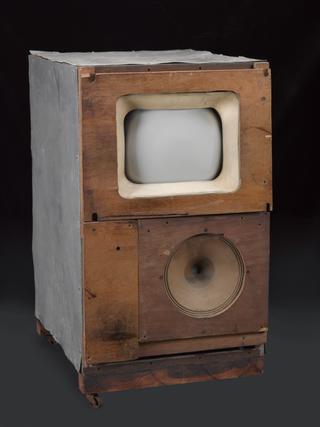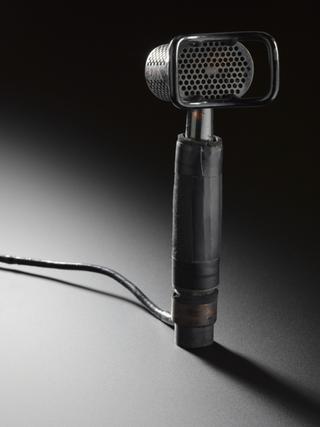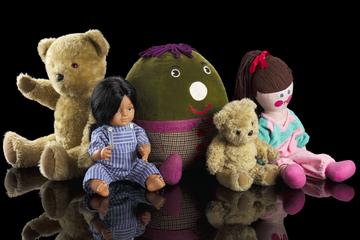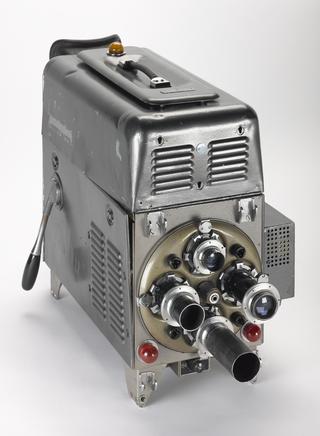
Ampex Video Recorder VR1000
- Made:
- 1959-1961 in United States
- maker:
- Ampex Corporation
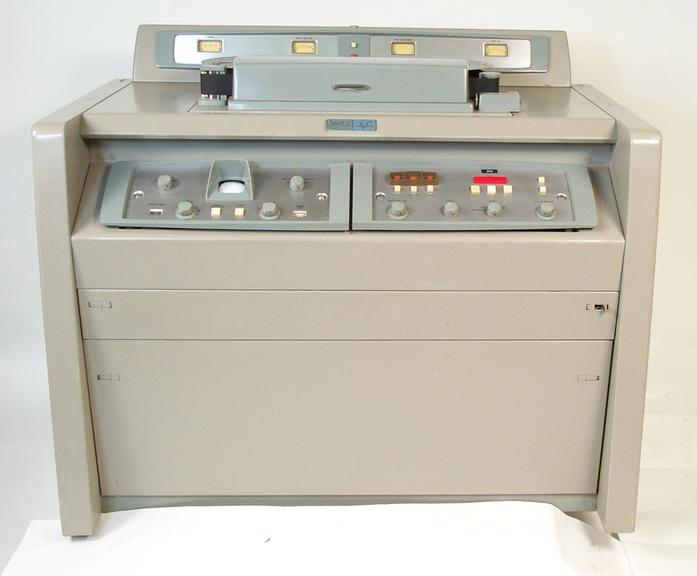
Ampex VR1000 2 inch quadruplex videorecorder tape transport, from 1959. Model VR-1000C, Serial No: 898. This transport was on display for many years in the Ampex UK head office in Reading. Presented to NMPFT by Ampex UK.
For years broadcasters had dreamed of a magnetic tape recorder which would record TV programmes. Several companies (including the BBC) had built prototype machines which proved impractical. In 1956 the Ampex Corporation in the USA unveiled the world's first practical video recorder, the VR1000. The Ampex VR1000 was developed by a team at Ampex in Redwood City California. The team was led by Charles Ginsberg and included, as a key member, Ray Dolby (of later Dolby system fame). It recorded a black and white picture on a 2 inch wide video tape and initially had a recording time of 60 minutes per reel. The picture was recorded across the tape from top to bottom using four heads on a rotating drum (Quadruplex recording).
The prototype machine of this, the world's first practicable videorecorder was unveiled at the NAB convention in Las Vegas in 1956. The first machines to arrive in the UK (the VR1000C variant for 405 line operation) were bought by Rediffusion, Granada and the BBC. The earliest UK version dates from 1959.
What you see here is only about a third of the equipment. There are two massive racks containing all the system electronics. This machine changed forever the way in which TV programmes were made.
Details
- Category:
- Television
- Object Number:
- 1991-5118
- Materials:
- metal (unknown), electronic components and plastic (unidentified)
- Measurements:
-
overall: 1210 mm x 2390 mm x 870 mm, 373kg
- type:
- video recorder
- credit:
- The National Media Museum, Bradford
